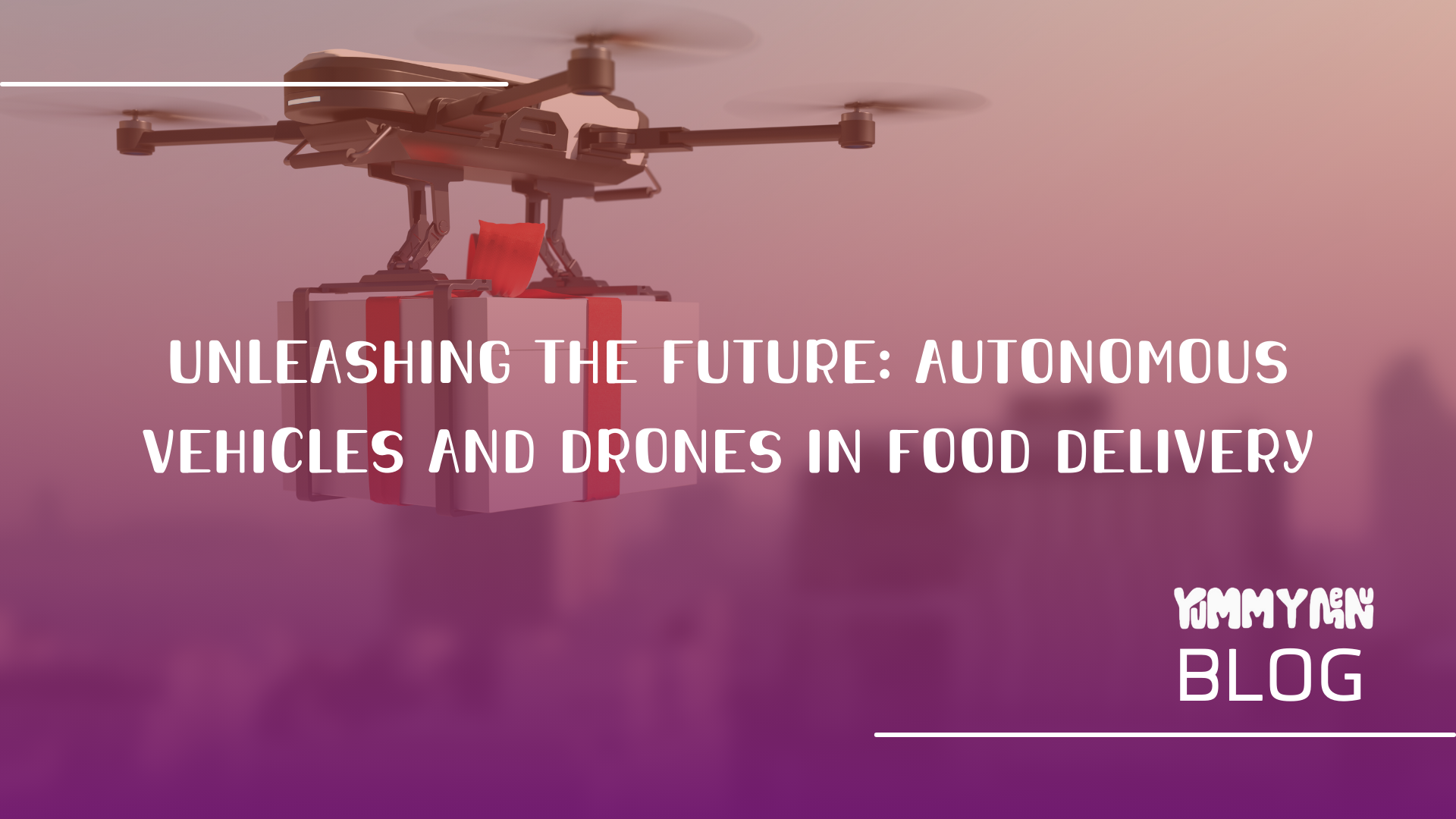
Unleashing the Future: Autonomous Vehicles and Drones in Food Delivery
The food delivery landscape is evolving at an unprecedented pace, driven by technological innovations that promise to reshape the way we receive our favorite meals. As we look ahead, autonomous vehicles and drones are emerging as game-changers in the world of food delivery. In this blog post, we'll explore the exciting future that awaits as autonomous vehicles and drones take center stage in the culinary journey from kitchen to doorstep.
The Rise of Autonomous Vehicles
Enhancing Efficiency and Speed
Autonomous vehicles, commonly known as self-driving cars, are set to revolutionize food delivery by offering unprecedented efficiency and speed. Imagine a future where your favorite pizza or sushi arrives at your doorstep without a human driver. Autonomous vehicles have the potential to significantly reduce delivery times, ensuring that hot and fresh meals reach customers faster than ever before.
Improved Cost-effectiveness
The integration of autonomous vehicles in food delivery can lead to improved cost-effectiveness for businesses. Without the need to pay human drivers, delivery services can potentially lower operational costs, making it a win-win situation for both businesses and consumers.
Overcoming Traffic Challenges
Autonomous vehicles are equipped with advanced navigation systems and sensors, enabling them to navigate through traffic seamlessly. This is a game-changer for urban areas where congestion often hampers traditional food delivery services. Autonomous vehicles can choose the most efficient routes, ensuring timely deliveries even during peak hours.
Environmental Impact
As the world moves towards sustainability, autonomous electric vehicles are gaining traction. With reduced reliance on traditional fuel sources, these vehicles can contribute to a more eco-friendly food delivery ecosystem, aligning with the growing emphasis on environmental responsibility.
Taking to the Skies: Drone Delivery
Swift and Direct Routes
Drones offer a futuristic and direct approach to food delivery. Flying above traffic and geographical obstacles, drones can take the shortest and most direct routes, ensuring rapid deliveries. This is particularly advantageous for delivering meals to remote or hard-to-reach locations.
Reducing Carbon Footprint
Drones are inherently energy-efficient and produce minimal carbon emissions compared to traditional delivery vehicles. Adopting drone technology in food delivery aligns with the global push towards green and sustainable solutions, contributing to a reduction in the overall carbon footprint of the industry.
Cost-effective for Short Distances
Drones are highly effective for short-distance deliveries, making them an ideal solution for urban areas where the demand for quick and convenient food delivery is high. As technology advances and regulations evolve, we can expect an increase in drone deliveries for shorter distances.
Technological Advancements
Drone technology is rapidly advancing, with developments in artificial intelligence and machine learning enhancing their capabilities. These advancements enable drones to navigate complex environments, avoid obstacles, and ensure precise and safe deliveries.
Overcoming Challenges and Embracing the Future
While the future of food delivery with autonomous vehicles and drones holds immense promise, several challenges must be addressed for widespread adoption. Regulatory frameworks, safety concerns, and public acceptance are critical factors that need attention.
Regulatory Frameworks
Governments and regulatory bodies play a crucial role in shaping the future of autonomous vehicles and drone deliveries. Establishing clear guidelines and standards is essential to ensure the safety, security, and ethical use of these technologies.
Safety and Reliability
Ensuring the safety and reliability of autonomous vehicles and drones is paramount. Rigorous testing, regular maintenance, and fail-safe mechanisms must be in place to address concerns related to accidents or system malfunctions.
Public Perception
Building public trust is essential for the widespread acceptance of autonomous vehicles and drones in food delivery. Education and awareness campaigns can help address concerns and highlight the benefits of these technologies in terms of efficiency, speed, and environmental impact.
Integration with Existing Systems
Seamless integration with existing transportation and delivery systems is crucial for the successful adoption of autonomous vehicles and drones. Compatibility with urban infrastructure and coordination with other modes of transportation will be key considerations.
The future of food delivery is set to soar to new heights with the integration of autonomous vehicles and drones. As technology continues to advance and regulatory frameworks evolve, we can anticipate a more efficient, rapid, and environmentally friendly food delivery ecosystem. The marriage of innovation and convenience in autonomous deliveries promises a tantalizing future where our favorite meals are just a click away, transported by the cutting-edge technologies of tomorrow.
